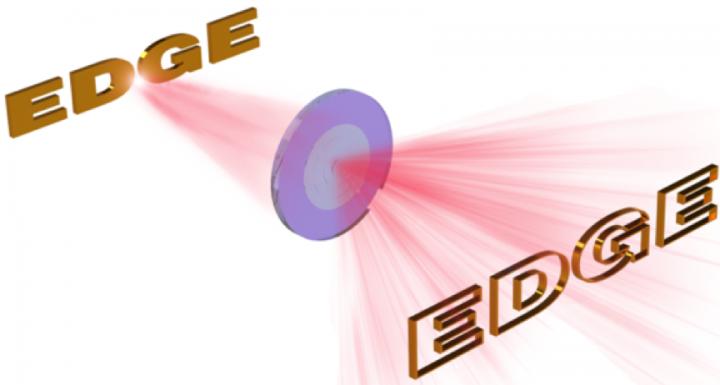
Credit: @Science China Press
Over the past decades, image processing has evolved into a significant technique for science and engineering societies. One such is edge detection, which is a process that attempts to capture the significant features of objects in the image. There are two basic approaches for edge detection achievement. One of them is digital computation, the other one is analog computation. Compared with digital computation, the analog computation can deal with real time and continuous image processing with power-saving advantages. Therefore, researchers develop various methods for analog edge detection.
Especially, as the metamaterial and metasurface development, engineered nanophotonic materials have been widely studied for optical analog image processing. Recently, several theoretical works propose the approach to perform mathematical operations with complex material and fabrication process. Furthermore, spatial differentiation has been extended to experimental demonstration using various approaches, including surface plasmonics, photonic crystals, the photonic spin Hall effect and the Pancharatnam-Berry phase metasurface. However, all of these current methods are subject to their own limitations, and experimental demonstration of a highly efficient, compact, two-dimensional (2D) spatial differentiation device working for broadband frequencies is still missing.
In response to this challenge, recently, inspired by the radial phase gradient of Pancharatnam-Berry phase metasurface, for the first time, the optical research team led by Professor Hailu Luo from the Hunan University and Professor Zhaowei Liu from University of California, San Diego proposed a new design to impart 2D spatial differentiation on the impinging wavefront, based on the dielectric metasurface in transmission mode, providing the advantages of high efficiency, broadband and high-contrast. The dielectric metasurface based on geometric phase without any resonance structure ensures the operation at broadband working wavelength (whole visible range), enabling differentiation of color images. The high transmission mode of the compact metasurface sample make it easier to be aligned or integrated with the rest of the optical system, which is important for imaging-processing applications.
As schematically shown in Fig. 1, the designed system has the ability to filter the edge information of one object. Figure 2 demonstrate edge detection experiment of the intensity object. The first row is the original image of object. The edge detection image of the object is demonstrated in the second row. As seen, the proposed method can work as a 2D differentiator efficiently, with the 2D edge detection covering all the visible frequencies. As shown in Fig. 3, different imaging techniques are used to evaluate the proposed edge detection approach for the intensity object. Compared with dark field and phase contrast technique, the proposed method exhibits clear and strong signals at the cell edges indicating exceptionally high sensitivity and precision to detect the transparent biological specimens. The exploration of the highly efficient metasurface performing a basic optical differentiation operation opens new opportunities in applications of fast, compactible and power-efficient ultrathin devices for data processing and biological imaging.
###
See the article:
Junxiao Zhou, Haoliang Qian, Junxiang Zhao, Min Tang, Qianyi Wu, Ming Lei, Hailu Luo, Shuangchun Wen, Shaochen Chen, and Zhaowei Liu
Two-dimensional optical spatial differentiation and high-contrast imaging
Natl Sci Rev 2020;
https:/
Media Contact
Hailu Luo
[email protected]
Related Journal Article
http://dx.




